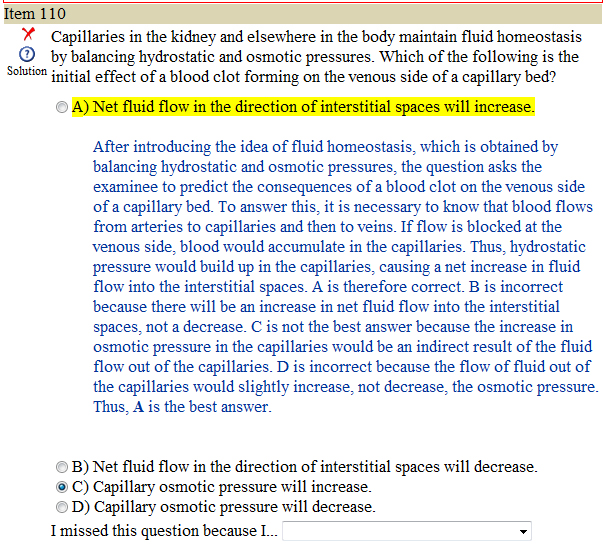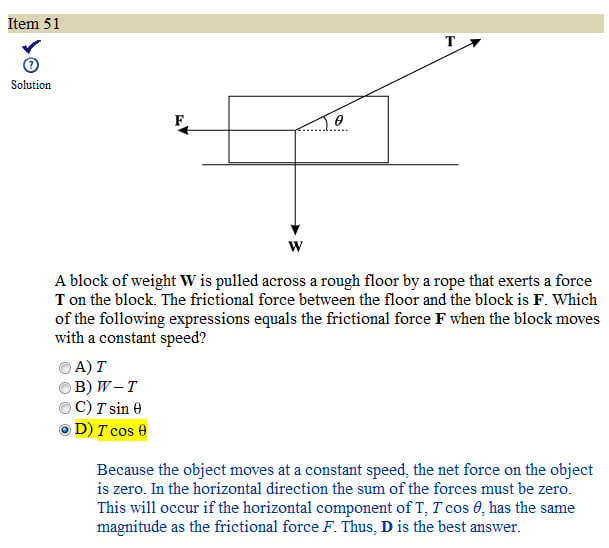Capillaries in the kidney and elsewhere in the body maintain fluid homeostasis by balancing hydrostatic and osmotic pressures. Which of the following is the initial effect of a blood clot forming on the venous side of a capillary bed?
A) Net fluid flow in the direction of interstitial spaces will increase.
B) Net fluid flow in the direction of interstitial spaces will decrease.
C) Capillary osmotic pressure will increase.
D) Capillary osmotic pressure will decrease.
After introducing the idea of fluid homeostasis, which is obtained by balancing hydrostatic and osmotic pressures, the question asks the examinee to predict the consequences of a blood clot on the venous side of a capillary bed. To answer this, it is necessary to know that blood flows from arteries to capillaries and then to veins. If flow is blocked at the venous side, blood would accumulate in the capillaries. Thus, hydrostatic pressure would build up in the capillaries, causing a net increase in fluid flow into the interstitial spaces. A is therefore correct. B is incorrect because there will be an increase in net fluid flow into the interstitial spaces, not a decrease. C is not the best answer because the increase in osmotic pressure in the capillaries would be an indirect result of the fluid flow out of the capillaries. D is incorrect because the flow of fluid out of the capillaries would slightly increase, not decrease, the osmotic pressure. Thus, A is the best answer.
One more, sorry guys, I thought that since in the increase of proteins inside the capillary would cause an increasing osmotic pressure causing the the net flow inside the capillaries and thus, the net flow in the direction of the interstitial space would decrease.





